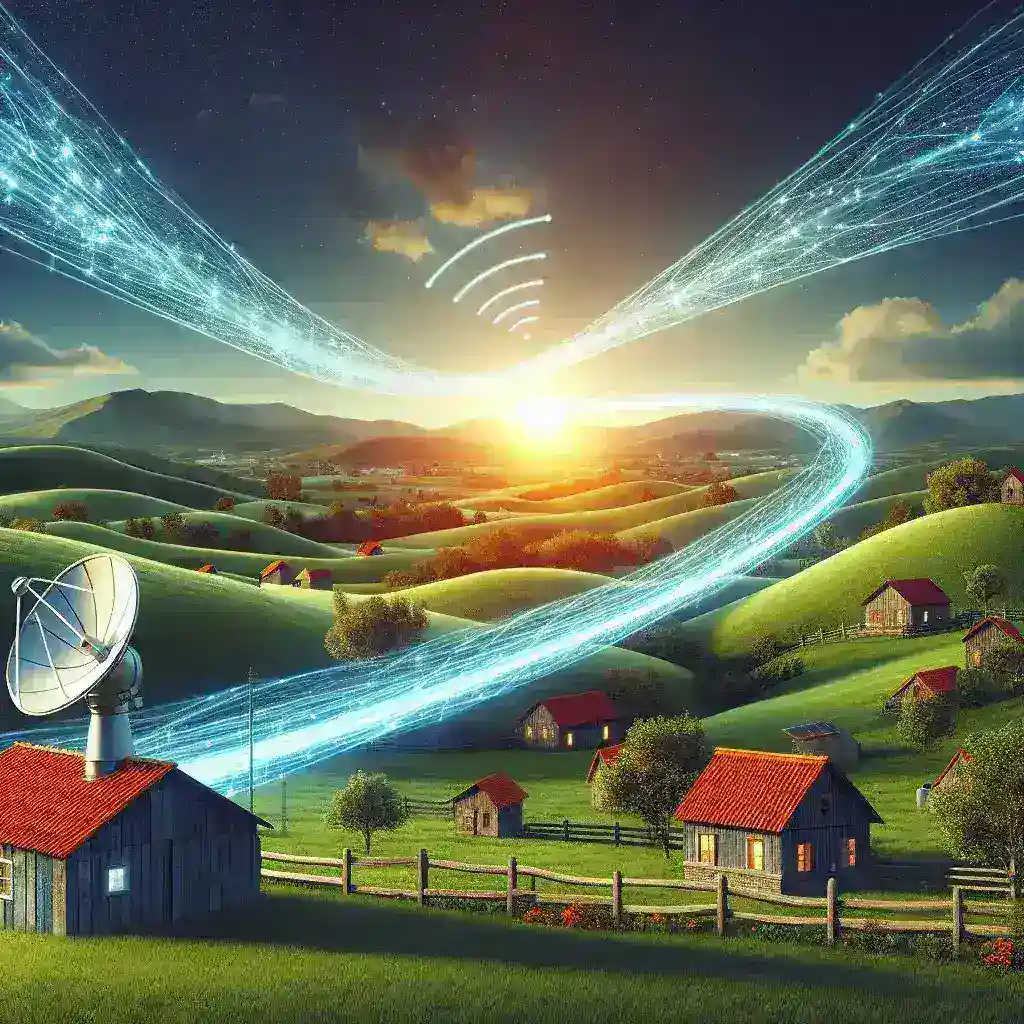Introduction
In recent years, technological advancements have bridged the digital divide, especially in rural areas. The satellite internet sector has surged forward, achieving parity with traditional fiber connections. This article delves into how satellite internet is revolutionizing connectivity in areas once deemed inaccessible.
The Rise of Satellite Internet
Satellite internet technology has evolved significantly since its inception. Initially criticized for high latency and limited bandwidth, satellite internet has undergone transformative changes. Companies like SpaceX with their Starlink program have launched thousands of low-earth orbit (LEO) satellites, drastically reducing latency and improving speeds. This innovation has made satellite internet a viable competitor to fiber optics, especially in rural and remote areas.
Historical Context
Historically, rural areas have struggled with slow internet speeds due to a lack of infrastructure. Traditional fiber connections require extensive ground-based installations, which are not always feasible in sparsely populated regions. Satellite internet emerged as a solution, providing access without the need for physical cables. However, early models were slow and unreliable, leading to skepticism among potential users.
Technological Advances
- Lower Latency: Modern satellite systems operate in low-earth orbit, significantly reducing the time it takes for data to travel to and from the satellite.
- Increased Bandwidth: Advances in satellite technology have increased the bandwidth available to users, allowing for higher speed connections.
- Lower Cost: Competition in the satellite market has driven prices down, making high-speed internet more accessible.
Comparing Satellite Internet and Fiber Connections
While fiber optics are known for their speed and reliability, satellite internet has closed the gap. Let’s examine key aspects where these technologies compare:
Speed
Fiber connections can offer speeds up to 1 Gbps, while satellite internet can now reach up to 300 Mbps in many areas. Although fiber remains faster, this is a significant improvement for satellite.
Reliability
Fiber connections are less susceptible to weather changes, while satellite can be affected by atmospheric conditions. However, advancements in technology are continuously minimizing these issues for satellite users.
Installation and Accessibility
Installing fiber connections can be costly and time-consuming, especially in remote areas. In contrast, satellite internet can be set up quickly, with minimal equipment required. This ease of installation is a major advantage for rural residents.
Pros and Cons of Satellite Internet
Pros
- Accessibility: Satellite internet can reach even the most remote locations, providing essential connectivity to underserved populations.
- Quick Installation: Users can get connected in a matter of days with minimal setup.
- Improved Technology: With ongoing advancements, the quality of satellite internet is consistently improving.
Cons
- Weather Sensitivity: Rain and snow can affect service quality.
- Data Caps: Some satellite providers impose data limitations, which can be restrictive for heavy users.
- Latency: While improved, satellite internet can still experience higher latency compared to fiber connections.
Future Predictions
The future of satellite internet looks promising. With the launch of more LEO satellites and continued innovation, we can expect:
- Further reductions in latency and increased speeds.
- Expansion of coverage areas, reaching even the most isolated communities.
- Increased competition leading to better pricing and service options for consumers.
Real-World Examples
Many rural communities have benefited from the advent of satellite internet. For instance, in parts of Montana, where fiber installations are economically unfeasible, residents have turned to satellite internet to access online education and telehealth services. This newfound access has transformed lives and created opportunities for those living in remote areas.
Conclusion
As satellite internet achieves parity with fiber connections, especially in rural areas, the landscape of digital connectivity is changing. With ongoing advancements and increased access, satellite internet is poised to play a crucial role in bridging the digital divide. This technology not only enhances access to information and services but also empowers communities by connecting them in ways that were once unimaginable.
Call to Action
If you live in a rural area and are struggling with internet connectivity, explore satellite internet options today. Take the first step towards a more connected and informed life.

